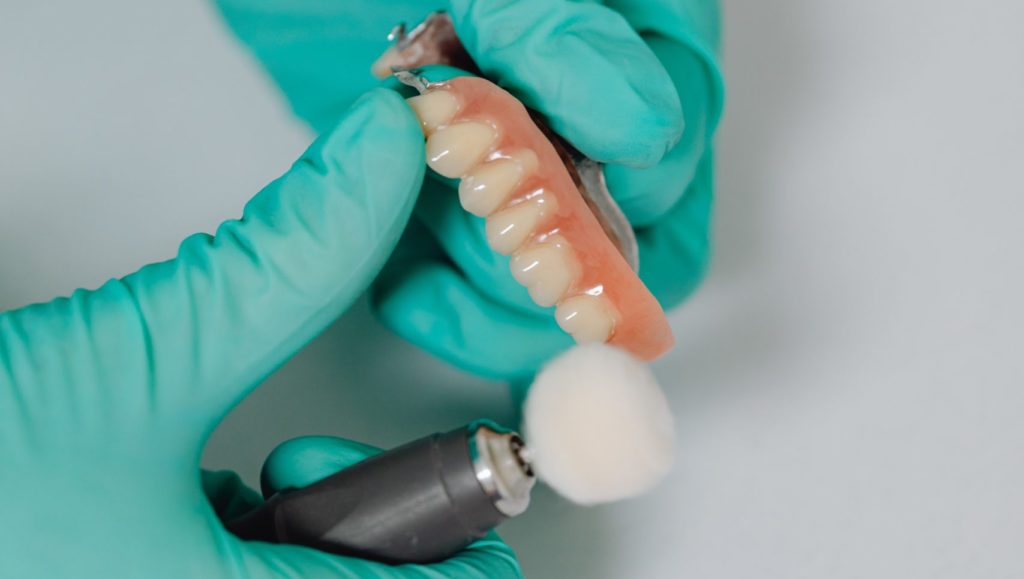In the past, dentures were the sole solution for replacing missing teeth, but that is no longer the case. Today, a missing tooth can be replaced with a false tooth in several different ways, recovering much of the original function that has been lost.
The best alternative to dentures depends on your particular smile. If you have been struggling to adjust to dentures, or are just considering the options available to you today, read on and get in touch to ensure your overall dental health stays at its best.
Why must a missing tooth be replaced?
Beyond the desire to retain the appearance of a complete smile, replacing a missing tooth is essential to prevent the development of greater health issues. Without a false tooth in place, the exposed jawbone can become a site for bacterial growth, which may cause damage to the surrounding teeth. This problem is compounded by the increased likelihood for dry mouth. Further, your teeth depend on one another to stay in place—a missing tooth can cause the surrounding teeth, or the teeth on the opposing jaw, to move towards the gap.
It may surprise you to know that the percentage of adults with no natural teeth has decreased from 23.6% to 6.4% over the past 40 years. That goes to show how access to preventive treatments, such as dental implants and bridges, are helping to protect the smiles of Canadians.
What are the alternatives to dentures
For most, dentures are not the best option available. While dentures may require a lengthy adjustment period, often involving difficulties speaking or chewing, alternatives such as dental implants and bridges are usually found to feel much more natural.
Dental Implants
A dental implant is a small metal post that is surgically placed into the jawbone where it fuses with the bone and acts as an anchor for a replacement tooth. It is made of titanium, with a false tooth cap that is designed to look like the surrounding natural teeth.
Dental implants are surgically placed in the jawbone where they fuse with the bone and act as an anchor for a replacement tooth. This offers a similar feeling to a natural tooth in the mouth, with the titanium post being similar to the natural tooth’s root. Dental implants are the closest thing to having a real, natural tooth.

Dental Bridges
Dental bridges are one of the most common and cost-effective ways to replace missing teeth. It is often used to fill a gap caused by a missing tooth by using the neighbouring, healthy teeth.
A dental bridge is a fixed prosthesis that places a false tooth in the gap of a missing tooth, but is anchored to a surrounding tooth or teeth. The false tooth will be shaped in such a way that it fills in any spaces left by the missing tooth and can also help you chew your food better.
The biggest difference between a dental bridge and a dental implant is that a bridge does not require a titanium post to be surgically placed in the jawbone. Dental bridges offer good function and appearance, though they may not be the best solution since they do not address the underlying structural problems that may persist, such as bone loss.
Overdentures
An overdenture is a type of denture that uses surgically implanted posts to secure it to the jawline. Unlike traditional dentures, overdentures are able to fit securely and reliably with few of the frustrations that come from using dentures. The overdenture is removable, though it is typically only removed to be cleaned or when sleeping.
Because overdentures make use of posts, they are similar in a sense to dental implants. In this way, they are a type of hybrid between the two options, offering a more affordable option particularly when replacing several missing teeth. That said, overdentures are still substantially more costly than dentures, though they offer excellent durability and functionality as a long-term investment.
Deciding between dentures, implants, and more
There are two parts to replacing missing teeth: first, restoring the functionality of the bite so that a person can eat and speak without a problem. This is where we find the greatest difference between dentures and the alternatives.
Dental implants are secured to the jawbone, similar to a natural tooth, which means that the sensation of having an actual tooth in place is retained. On the other hand, dentures are secured by adhesive and are notoriously difficult to find a perfect fit. That can lead to dentures slipping or food becoming trapped underneath the denture. Ultimately, most patients using dentures will eventually transition to implants or dental bridges for the superior durability, fitment, and feeling they provide.
The second part of replacing a missing tooth is retaining the appearance of the smile by matching the teeth surrounding the missing tooth. Regardless of the option chosen, the modern techniques for shaping and colouring false teeth should ensure a precise match.
As you review your options, consider reaching out to the friendly team at New Look Dental. Our dental experts are here to help by taking a look at your smile to discover the perfect solution for you. Reach out with any questions you may have about dentures, implants, or the differences between the options available to you!
